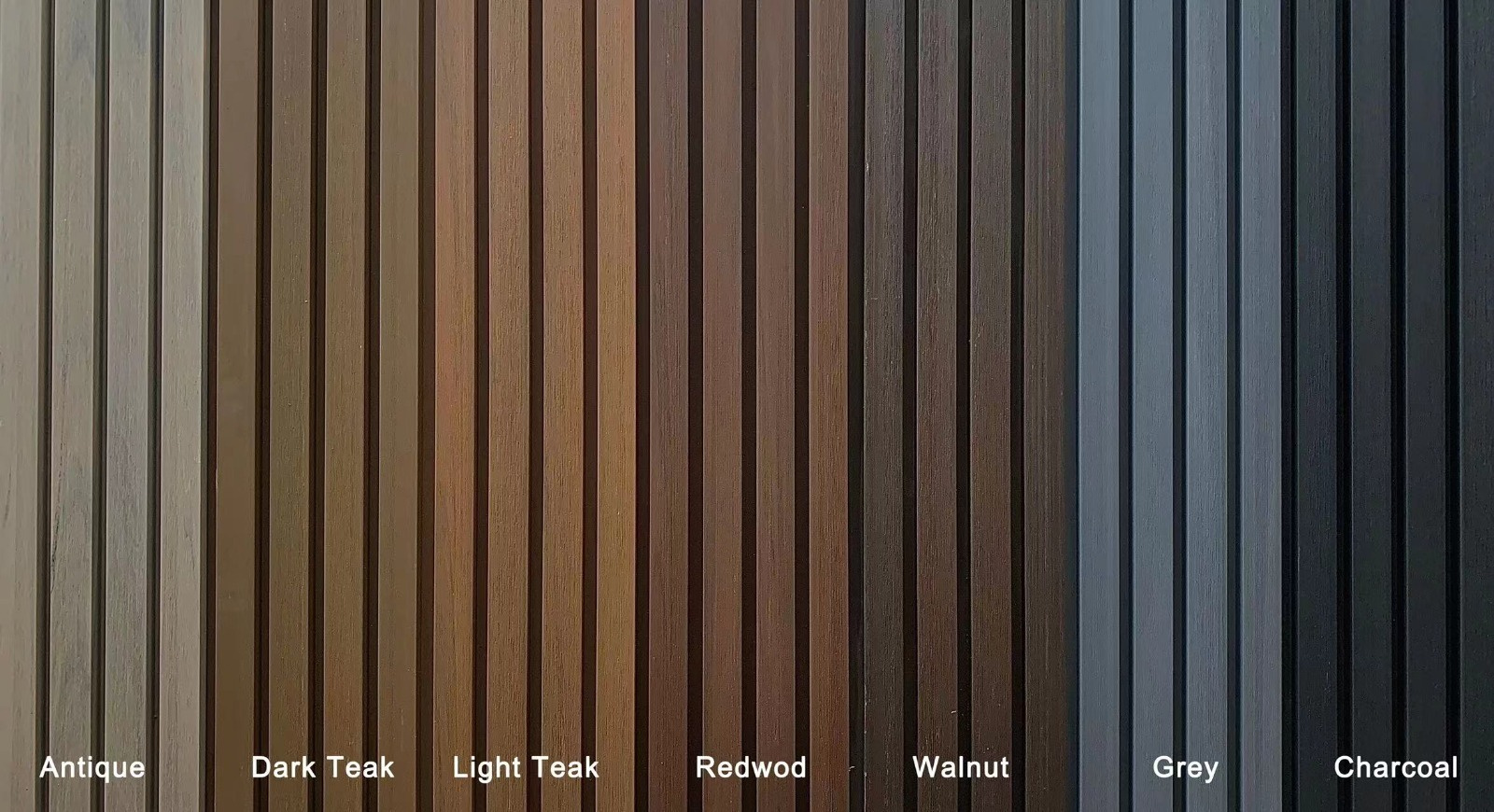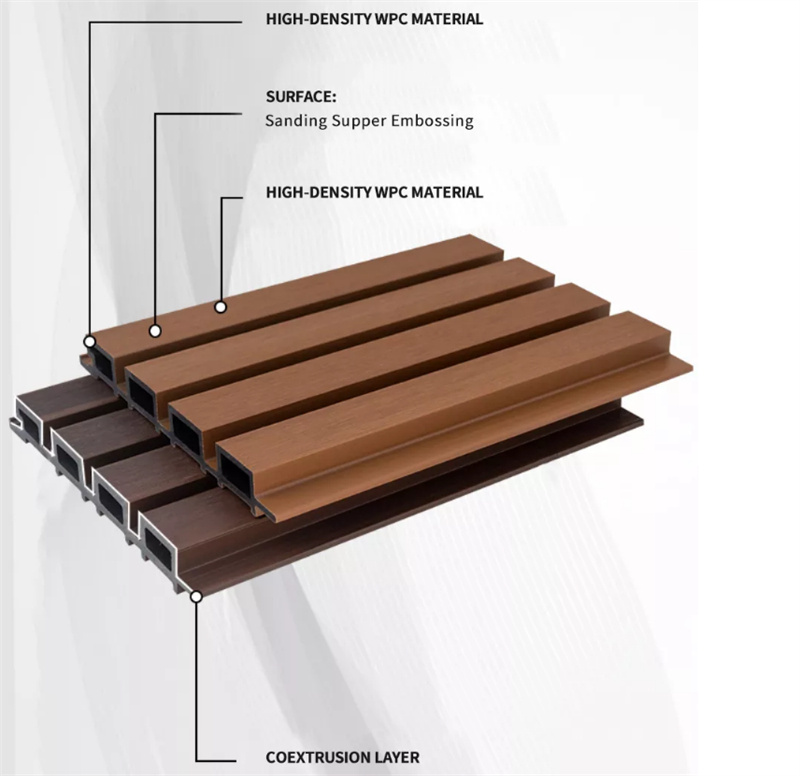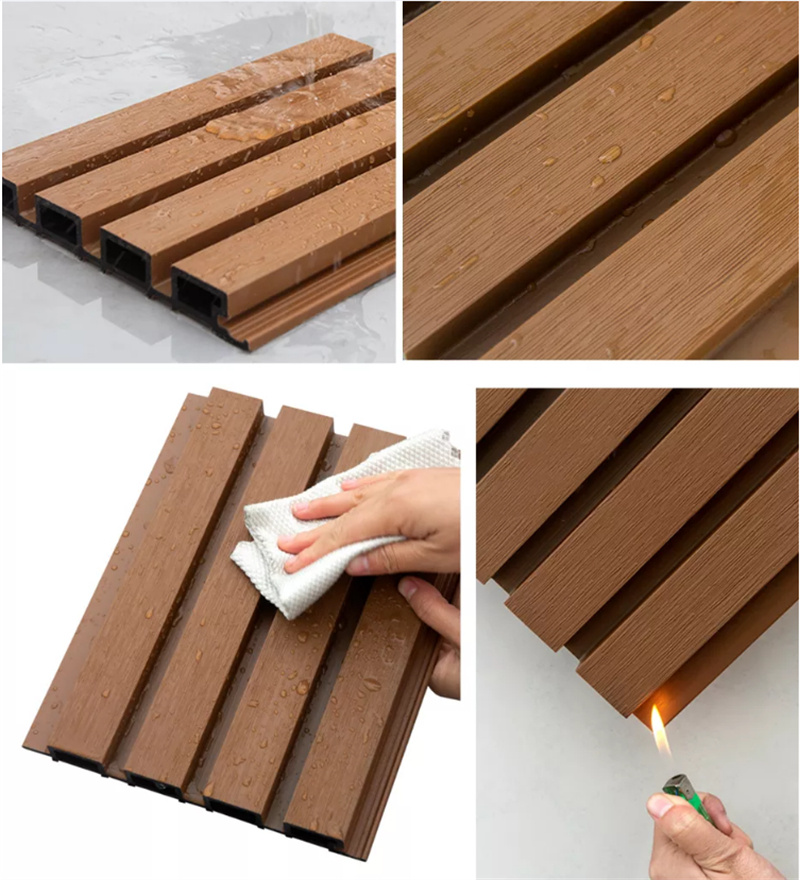WPC cladding is indeed an innovative building material that offers a combination of the visual appeal of wood and the practical benefits of plastic. Here are some key points to further understand this material:
Composition: WPC cladding is typically composed of a mixture of wood fibers or flour, recycled plastic, and a binding agent or polymer. The specific ratios of these components can vary depending on the manufacturer and intended application

Dimension:
219mm wide x 26mm thickness x 2.9m long
Color Range:
Charcoal,Redwood,Teak,Walnut,Antique,Grey
Features:
• Co-extrusion Brushed Surface
1.**Aesthetic Appeal and Durability**: WPC cladding offers the aesthetic
appeal of natural wood while maintaining the durability and low maintenance advantages of plastic. This combination makes it an attractive choice for building exteriors.

2.**Composition and Manufacturing**: WPC cladding is made from a blend of wood fibers, recycled plastic, and a binding agent. This mixture is molded into planks or tiles, which can be easily installed to cover the exterior surfaces of buildings.

3. **Weather Resistance and Longevity**: WPC cladding demonstrates excellent resistance to weathering, protecting it from issues like rot, mold, and insect damage. It’s also less prone to cracking or splitting compared to natural wood, resulting in a longer lifespan.
4. **Low Maintenance**: Due to its durability and resistance to environmental factors, WPC cladding requires minimal maintenance over time. This characteristic can save building owners both time and money in the long run.
5. **Customization**: WPC cladding is available in a wide variety of colors and finishes, including options that replicate wood grain, brushed metal, and stone effects. This versatility allows for the creation of customized and unique building exteriors.
6. **Environmental Friendliness**: One of the significant advantages of WPC cladding is its eco-friendly nature. It’s produced using recycled materials, helping to reduce the demand for new resources. Additionally, its manufacturing process typically involves fewer harmful chemicals compared to traditional building materials.
7. **Low Carbon Footprint and LEED Certification**: Because of its recycled content and reduced chemical usage, WPC cladding can contribute to a lower carbon footprint. This aligns with sustainability goals and could potentially lead to LEED certification, which recognizes environmentally responsible building practices.
Incorporating WPC cladding into construction projects showcases a commitment to combining aesthetics, durability, and environmental consciousness. Its various benefits make it a compelling choice for architects, builders, and property owners looking for a sustainable and visually appealing exterior solution.
Post time: Apr-01-2025

